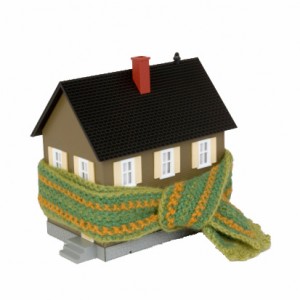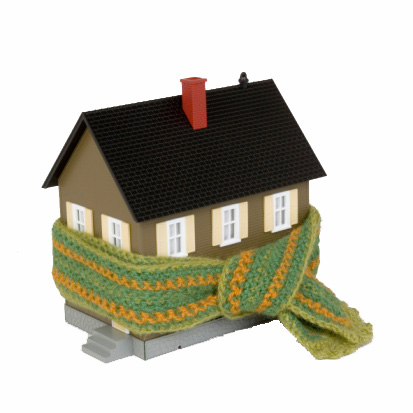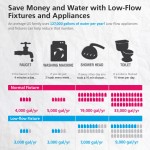 One of the best perks of making your home more green is that it makes a ton of financial sense. Windy, rainy and cool weather is already here. For the amount of money you may spend on candy and Halloween decorations this year you could winterize your home, reduce your carbon footprint, be more comfy and save some money as a result.
One of the best perks of making your home more green is that it makes a ton of financial sense. Windy, rainy and cool weather is already here. For the amount of money you may spend on candy and Halloween decorations this year you could winterize your home, reduce your carbon footprint, be more comfy and save some money as a result.
Regardless whether you rent or own – these nine great tips apply to everyone and makes financial sense. Why 9? Chinese say it’s a lucky number. We can use as much luck as we can these days, especially when it comes to saving a few bucks or preserving the environment.
1. Plug that Draft from Your Outlets
There are several places in your home where you may be losing heat and may not even realize it. One that most people overlook is the electrical outlets. Remedying this is extremely cheap and simple: Use AM Foam Outlet and Switch Gaskets(just $0.10 each) to stop drafts around your outlets and light switches. Just remove the cover plates using a screwdriver, place the precut foam seal over the outlet or switch, then put the cover plates back on and you’re finished.
2. Caulking Those Cracks
No science degree needed for this also. Simply seal up small cracks around windows, doors, vents, anywhere air can filter through with caulk like nontoxic Chemlink Mean Green Universal Constructive Adhesive ($5/10 ounces). Find all those small drafts can be as easy as slowly walking around with incense stick or a candle along floors, walls, and windows and notice where the flame flutters or smoke drifts.
3. Weather-strip That Door
Take things up a notch by lining the top and sides of your entry door with weather stripping. The strips come in different sizes and styles. Find it Ace’s website or just speak to someone at your local HomeDepot about what’ll work for you.
4. Program that Thermostat
Does your heater know when you leave for work? Help him do that with a programmable thermostat! Don’t worry, it’s not as complicated as the new version of Windows. Read the manual, it’ll guide you step by step. If you don’t have one yet – just install one like the Hunter Set and Save ($22), and program it around your schedule so it turns off when you’re out and turns on when you’re in. It can save you up to $150 and chip away at about 1,800 pounds of CO2 each year. Not bad, eh?
5. Get a Snuggie for Your Heater
Yes that’s right, if you give your water heater some love it will return the favor in some green bank notes. Wrap it in a giant cozy Water Heater Blanket R5 ($13 on Amazon) and it will keep your water hot longer. This way it won’t need to work as hard and save resources. Tip: It will pay for itself in energy savings within twelve months.
6. Pipe Check Up from the Neck Up
After you dress up the Water Heater consider insulating your water pipes as well. Try pipe foam, such as MD Tube Pipe Insulation ($4/12 feet) or something similar. It sort of looks like a big foam straw with a cut on the side. Simply wrap this goodie around pipes coming from your water heater, under the sink, in crawl spaces and anywhere else they’re exposed. Where you feel the pipe warm this is the stop energy is potentially ecaping.
7. Give Your Filter an Exam
Filthy or clogged furnace filters hinder airflow and force your furnace to use more energy. They also trap in air pollutants like mold and pollen. Have it replaced or consider buying a “permanent” filter ($62). The permanent types you can just rinse every few weeks. Not needing to replace it means no waste down the road.
8. Win-dough Situation
If you’ve got single-pane windows consider installing EnergySavr Window Inserts ($45-$99/insert) – clear, lightweight window insulators. If you’re on a budget and can’t swing dual panes or simply renting right now then this is a much more economical solution. They are easy to install and easy to remove. They are also more effective than just simple caulking as described above.
9. Have PG&E Do It
Short on time but good with phones? You can get an energy audit by calling PG&E’s Smarter Energy Line to get an energy specialist to help you with your home energy audit, or you can do a simple self-audit by direct mail or the Internet. Contact PG&E to learn where your energy dollar goes.
There is an old Native American Proverb that says “We do not inherit the earth from our ancestors, we borrow it from our children.” I like that. Let’s do our part and take some of the steps mentioned here. Small changes will eventually make a big difference. Have fun!

 How Much Water is Your Home Really Wasting?
How Much Water is Your Home Really Wasting? Home Roofs – Big Problem and Simple Solution?
Home Roofs – Big Problem and Simple Solution? How to Save Energy With Radiant Floor Heating
How to Save Energy With Radiant Floor Heating